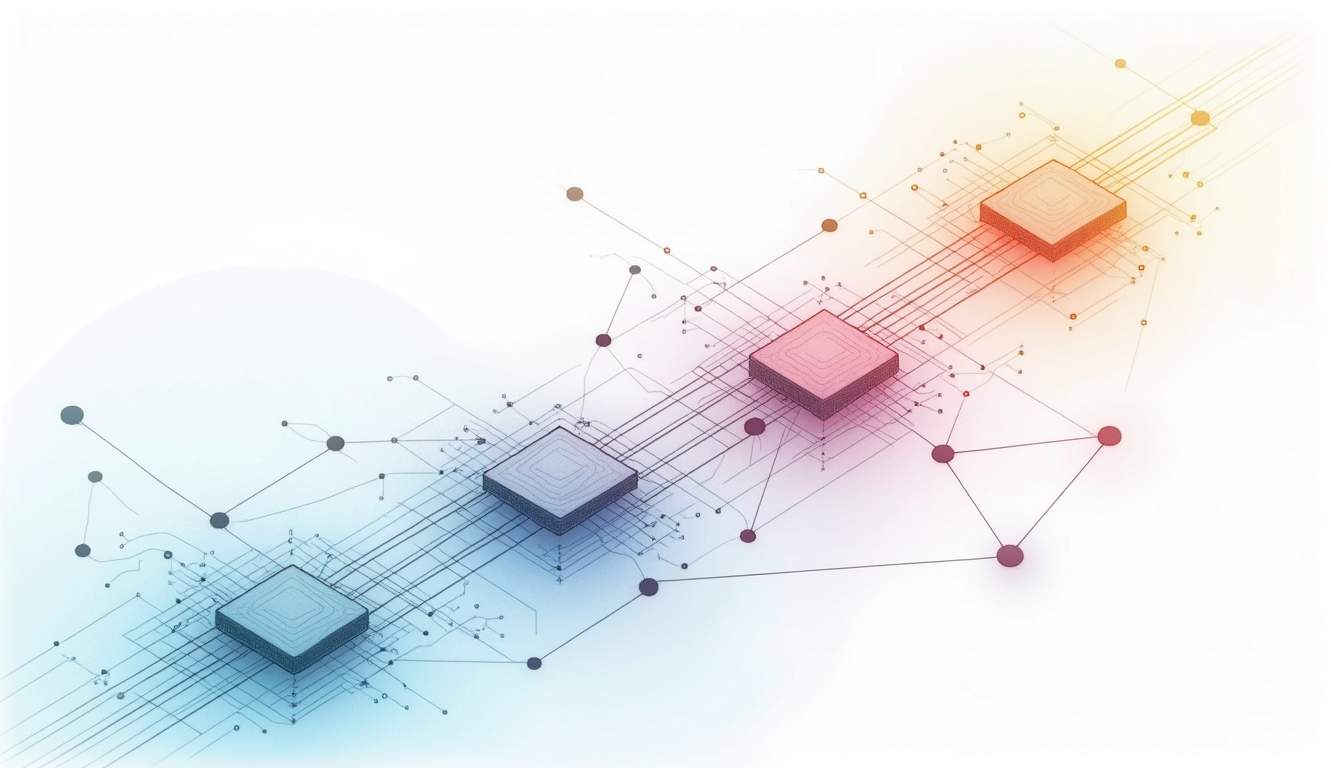Why AI-Driven RPC Routing Will Be the Next Big Thing
As blockchain technology continues to evolve, the infrastructure supporting Web3 applications is becoming increasingly complex and critical. Remote Procedure Call (RPC) routing is at the heart of this infrastructure, enabling decentralized applications (dApps) to communicate efficiently with blockchain networks. With the rise of AI and machine learning, AI-driven RPC routing is poised to revolutionize how blockchain applications manage connectivity, reliability, and cost-efficiency. This article explores why AI-driven RPC routing will be the next big thing in blockchain infrastructure and how it addresses the challenges faced by developers and enterprises alike.
The Growing Importance of RPC Routing in Web3
RPC protocols serve as the communication backbone between blockchain nodes and client applications. They allow dApps to query blockchain data, submit transactions, and interact with smart contracts. However, as blockchain networks grow in complexity and user demand surges, relying on a single RPC provider can lead to bottlenecks, increased latency, and costly downtime.
Traditionally, many projects have depended on single RPC providers like Infura or Alchemy. While these providers offer robust services, this single-provider dependence introduces risks such as outages and performance degradation. For example, an RPC outage can halt transaction processing, degrade user experience, and even lead to financial losses for blockchain projects. According to industry reports, RPC downtime can cost projects thousands of dollars per minute in lost revenue and user trust.
To mitigate these risks, multi-provider RPC routing has emerged as a best practice. By distributing requests across multiple RPC endpoints, applications can achieve higher redundancy, lower latency, and cost savings. This multi-provider approach is the foundation upon which AI-driven RPC routing builds its transformative potential.
What is AI-Driven RPC Routing?
AI-driven RPC routing leverages artificial intelligence and machine learning algorithms to dynamically manage and optimize the routing of RPC requests across multiple providers. Instead of static or manual routing rules, AI systems continuously analyze real-time performance metrics such as latency, throughput, error rates, and cost to determine the optimal routing path for each request.
This intelligent orchestration enables blockchain applications to automatically failover to the fastest or most reliable RPC endpoint, balance loads efficiently, and reduce operational costs by selecting cheaper providers when possible. Unlike traditional RPC routing, which might rely on simple round-robin or fixed priority schemes, AI-driven routing adapts to network conditions and provider performance in real time.
Key Capabilities of AI-Driven RPC Routing
- Dynamic Failover: Automatically switches to backup RPC providers during outages or degraded performance.
- Load Balancing: Distributes requests evenly to prevent overloading any single provider.
- Latency Optimization: Routes requests to the lowest-latency endpoints based on geographic and network conditions.
- Cost Efficiency: Balances performance with provider pricing to minimize expenses without sacrificing reliability.
- Predictive Analytics: Anticipates potential failures or congestion to proactively reroute traffic.
Why AI-Driven RPC Routing Matters for Blockchain Projects
Blockchain applications face unique challenges that make AI-driven RPC routing particularly valuable. These include the need for high availability, scalability, and cost control in a rapidly evolving ecosystem.
1. Enhancing Reliability and Reducing Downtime
RPC downtime can cripple dApps, causing transaction delays and user frustration. AI-driven routing improves reliability by continuously monitoring the health of multiple RPC providers and instantly rerouting traffic away from any failing or slow endpoints. This real-time responsiveness reduces the risk of outages and ensures uninterrupted service.
For instance, Web3 applications employing AI-driven routing can maintain near 100% uptime by leveraging multi-provider redundancy. This is a significant improvement over single-provider setups, which are vulnerable to outages caused by provider-specific issues.
2. Optimizing Latency for Better User Experience
Latency is a critical factor in blockchain applications, especially for real-time interactions such as decentralized finance (DeFi) trading or gaming. AI-driven routing algorithms can select RPC endpoints based on geographic proximity and current network conditions, minimizing latency and improving responsiveness.
Multi-region RPC routing, enhanced by AI, can reduce latency by intelligently directing requests to the fastest available nodes. This capability is essential for global dApps that serve users across different continents.
3. Reducing Costs Through Intelligent Provider Selection
RPC calls can be expensive, especially at scale. AI-driven routing can optimize costs by balancing requests between premium and budget-friendly RPC providers without compromising performance. This cost optimization is crucial for startups and enterprises aiming to scale their applications efficiently.
Studies have shown that auto-routing can reduce RPC expenses by up to 40%, a significant saving that can be reinvested into development and user acquisition.
4. Scaling to Millions of API Calls Seamlessly
As blockchain adoption grows, applications must handle millions of API calls daily. AI-driven RPC routing supports this scale by orchestrating API requests across multiple providers and regions, preventing bottlenecks and ensuring smooth scaling without breaking budgets.
This orchestration also simplifies infrastructure management, allowing developers to focus on building features rather than troubleshooting connectivity issues.
The Role of Multi-Cloud and Multi-Provider Strategies in AI-Driven RPC Routing
AI-driven RPC routing is most effective when combined with multi-cloud and multi-provider architectures. These strategies distribute blockchain API requests across various cloud platforms and RPC providers, increasing redundancy and performance.
Google’s Multi-Cloud Proxy (MCP) technology exemplifies this trend by enabling seamless multi-cloud RPC routing. MCP helps blockchain applications scale APIs and reduce latency by intelligently routing requests across cloud regions and providers. Integrating AI-driven routing with MCP further enhances the reliability and efficiency of blockchain infrastructure.
Moreover, multi-provider RPC aggregators that utilize AI-driven routing offer a unified endpoint for developers. This abstraction simplifies integration while delivering the benefits of redundancy, failover, and cost optimization behind the scenes.
Comparing AI-Driven RPC Routing to Traditional Approaches
Traditional RPC routing methods often rely on static configurations or simple load balancing techniques. While these approaches provide basic redundancy, they lack the adaptability to respond to real-time network fluctuations and provider performance variations.
In contrast, AI-driven routing continuously learns from historical and live data, making proactive decisions that improve overall system health. This dynamic approach outperforms static methods by reducing downtime, lowering latency, and cutting costs.
For example, projects using single providers like Infura or Alchemy risk exposure to outages and price increases. AI-driven multi-provider routing offers a compelling alternative by distributing risk and optimizing resource usage.
Looking Ahead: The Future of Blockchain Infrastructure with AI-Driven RPC Routing
The future of blockchain infrastructure lies in intelligent, adaptive systems that can meet the demands of decentralized applications at scale. AI-driven RPC routing represents a critical step forward in this evolution, combining the power of machine learning with multi-provider redundancy and multi-cloud flexibility.
As Web3 projects continue to grow in complexity and user base, the ability to deliver seamless, reliable, and cost-effective RPC connectivity will become a key competitive advantage. Developers and enterprises that adopt AI-driven RPC routing will be better positioned to build resilient applications that offer superior user experiences.
In summary, AI-driven RPC routing is not just an incremental improvement—it is a paradigm shift that addresses the core challenges of blockchain infrastructure. By enhancing reliability, reducing latency, optimizing costs, and enabling massive scalability, AI-driven RPC routing is set to become the next big thing in the Web3 ecosystem.
Conclusion
RPC routing is foundational to the success of blockchain applications, and AI-driven approaches are transforming how this critical function is managed. By leveraging artificial intelligence to dynamically route requests across multiple providers and clouds, blockchain projects can achieve unprecedented levels of uptime, performance, and cost efficiency.
As the Web3 landscape matures, embracing AI-driven RPC routing will be essential for developers and organizations seeking to build scalable, reliable, and user-friendly decentralized applications. The next big thing in blockchain infrastructure is here—and it’s powered by AI.
Ready to harness the power of AI-driven RPC routing for your blockchain projects? Look no further than Uniblock, the Web3 infrastructure orchestration platform that's already empowering over 2,000 developers. With Uniblock, you get a single API endpoint that intelligently auto-routes traffic across multiple providers, ensuring maximum uptime, minimal latency, and significant cost savings. Say goodbye to vendor lock-in and scale your dApps, tooling, or analytics with confidence. Start building with Uniblock today and join the forefront of the Web3 revolution.
.svg)






